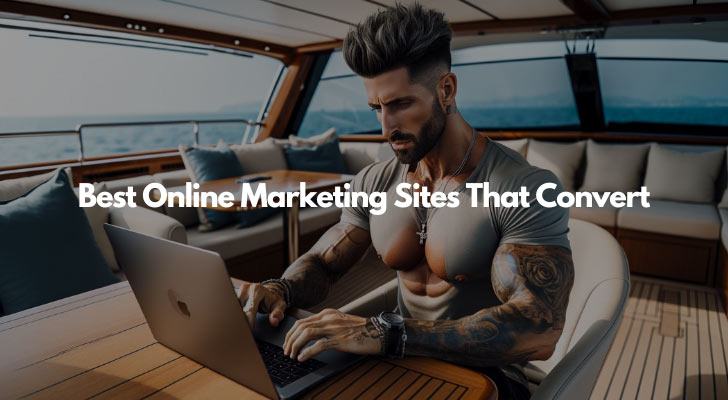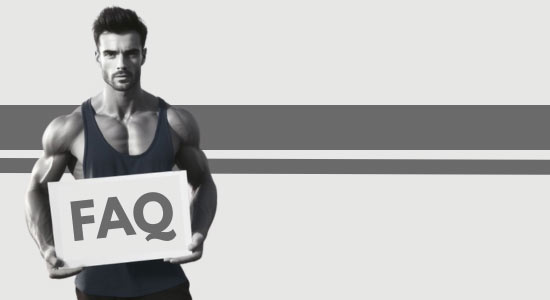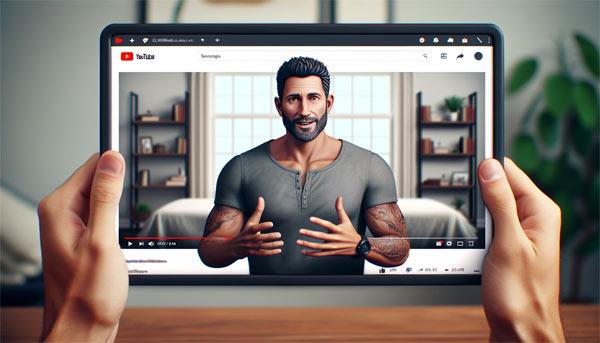If you are ready to start making serious money, you might wish to learn some techniques from some of the best online marketing sites that convert. While it is important to leverage advertisements to drive quality traffic to your site, your effort will be wasted if you cannot turn those visitors into qualified leads.
I will explain what a typical good online marketing site does to get the visitors to subscribe, stay loyal to the brand and make purchases. By following the technique you will be able to maximize response rates and ultimately generate a good level of monthly income from your website.
Did You Know?
- Average Conversion Rates: The average landing page conversion rate across all industries is around 2.35%.
- Top Performers: The top 25% of landing pages convert at 5.31% or higher.
- E-commerce Conversion: Average e-commerce conversion rates are 1-2%.
- Mobile vs. Desktop: Mobile devices account for approximately 50% of web traffic worldwide but typically have lower conversion rates compared to desktop.
- Email Marketing: Email marketing has an average ROI of $42 for every $1 spent.
Create Pillar Content
Pillar content, also known as cornerstone content, is a series of informational posts that represents your site's best work. To create pillar content, you should;
- Really understand your niche and technicality,
- Publish good articles accordingly and keep updating it as needed, then
- Promote your pillar articles regularly.
Pillar content is a kind of article that encourages visitor interaction through comments and feedback, but also through sharing. Good content will make the visitors irresistible to share with people they know.
How To Build Pillar Content
Here is the step to build pillar content for your website. Research and do the work as much as you can by yourself, but if you get stuck with any of the following, you can outsource the job. Find someone who can do some of the jobs for you on Fiverr, for example.
- Firstly, find some of the hottest topics in your niche and write them down. As many topics as you can come up with, but think about 3 or 4 at least.
- Form your ideas and see how many articles you can write (or create videos, infographics or even audio files.) At this point, you may want to break the topics down or combine two or more topics. For example, the two similar topics can be discussed in one article.
- Research and find out problems that people have relating to each topic, find solutions and alternative perspective on the problems. People may have already discussed the topics in sites such as Quora and Reddit. Read the discussions, form your own ideas.
- Start writing a draft.
How I "Finally" Make Over $7,000 Monthly Income
"The most valuable thing I've ever done!"
Identify Your Traffic Sources
In order to convert visitors into leads, it's crucial to identify your traffic sources and qualify that traffic. If you blindly advertise your site on Facebook or Google Ads without knowing your target audience, the most that you get is irrelevant traffic, comprising of people who are not interested in your niche.
They will unlikely to read your content or hear your recommendations, let alone buy your products. Using solo ads will unlikely to work because most traffic vendors have one general email list that covers all niches.
The key is to start with pinpointing your target audience and evaluating your traffic sources. So how can pros flood the best online marketing sites with the highest quality traffic that will convert? The following are a few ways which you can do, too.
Did You Know?
- Email Conversion Rates: The average email open rate is around 17.8%, with a click-through rate of 2.6%.
- Social Media Conversion: Conversion rates for social media ads can vary greatly, with Facebook ads averaging around 9.21%.
- Video Content: Including a video on a landing page can increase conversion rates by more than 80%.
- Influencer Marketing: Influencer marketing campaigns earn $5.78 for every dollar spent on average.
- B2B Conversion: The average conversion rate for B2B companies is around 2.23%.
Offer Something For Free
The easiest way is by offering a related product that others would sell for free. Ebooks or downloadable software are good options and you can often obtain them from PLR sites, either for free or less than, say $10. It can be a collection of ebooks, images, or infographics too.
Whatever the product is, it should be related to your niche. For example if your website is about weight loss, then a book that's related to weight loss, otherwise you will only attract a wrong crowd.
Your free offer can be shared across social networks and entrepreneurs' community forums. Needless to mention, if it's something valuable at absolutely no cost, people who find your offer may start to share with others, which will multiply the possibility of the traffic as well as the number of inbound links to your website.
Add a Wishlist Feature
Adding a wishlist feature to your site is like giving your customers their own little treasure chest where they can save all the things they love or want to buy later. To set this up, you might need a bit of tech know-how or the help of a web developer, especially if your site doesn't run on a platform with built-in wishlist capabilities.
Basically, you'll create a button on each product page that says "Add to Wishlist." When a customer clicks this, the item gets saved to their personal wishlist, which they can view anytime. It's handy for them to keep track of things they're eyeing, and it's great for you because it keeps them coming back. Plus, if you're feeling fancy, you can even send them reminders or special deals based on what's in their wishlist.
Create A Landing Page
A landing page is an essential factor to increase conversion. If you are sending traffic to your blog index page, then no wonder your conversion rate is not satisfactory. You need to create a landing page that tells your visitors exactly what your website is about and exactly what they need to do; to sign up with your newsletter.
A landing page is the face of your site, although it is possible for you to have multiple landing pages, or as many landing pages as you want according to the objective. For example, if your site is about weight loss and muscle building and you have two separate mailing lists, you can have two separate landing pages. You can have one landing page for hybrid customers and another landing page for those who are on a budget.
Your landing page can be linked and featured within your navigation menu, so that your visitors can find it easily, whatever the internal page on your site they first arrive.
There are some elements in which you can add to your landing page in order to convince your visitors to opt in, such as;
- Offering a free downloadable product as explained earlier, in exchange for opting-in.
- Explaining the subscription benefits (members-only discounts, monthly tips & advice, for example).
- Testimonials by existing subscribers.
Did You Know?
- SEO: Organic search leads have a 14.6% close rate, compared to 1.7% for outbound marketing leads.
- Personalization: Personalized call-to-actions convert 202% better than default versions.
- Retargeting: Retargeting ads can lead to a 70% increase in conversion rates.
- Loading Time Impact: A one-second delay in page response can result in a 7% reduction in conversions.
- Abandoned Carts: The average cart abandonment rate across all industries is about 69.57%.
Eliminate Distractions
Not everyone has the same taste or opinion. Some may like Product A that you recommend while others may like Product B that you also recommend, based on their past experience, lifestyle, personality and so on. For that reason, It is understandable that you may be tempted to promote several products on one page. But this is not necessarily the best idea unless the page is about a product comparison.
By giving too many "options", you may be simply distracting your visitors, making them harder to make decisions. It's vital to clarify the objectives of each page, and which product you recommend them the most. If there is more than one product, explain the reason clearly and briefly.
Spreading ads such as Google Adsense ads and Amazon recommendation boxes throughout the page is a distraction. Keep them to a minimum.
Include FAQs
Including a Frequently Asked Questions section on your site is like having a helpful guide ready to answer common questions. It’s super useful for your customers and can save you time too.
Think about what questions people usually ask about your products or services. These might be about shipping, returns, how to use a product, or payment options. Put these questions and their answers in a clear, easy-to-find spot on your site. It’s like giving your customers a map with all the important spots marked, so they don't have to wander around looking for answers.
This makes their shopping experience smoother and can help them decide to buy from you.
Use Videos
Videos are like the secret sauce of a good website. They grab attention and can explain things in a way that text or photos alone can't. You could have videos showing off your products, how-tos, customer reviews, or even behind-the-scenes glimpses of your business.
For example, if you sell cooking gadgets, a video showing someone using them in a real kitchen can be really engaging. Videos make your site more interactive and personal. They can help customers understand your products better and feel more connected to your brand.
Did You Know?
- Testimonials and Reviews: Products with customer reviews can result in 270% more conversions.
- Live Chat: Websites with live chat tend to have a 20% increase in conversions.
- Mobile Optimization: 74% of consumers are more likely to return to a mobile-friendly website.
- User Experience: A well-designed user interface could raise your website’s conversion rate by up to 200%.
- CTA Buttons: Changing the color of a call-to-action button can increase conversion rates by 21%.
Offer Live Chat Support
Live chat support is like having a friendly salesperson ready to assist your customers as they browse your online store. It’s really handy for answering questions in real-time, giving advice, or helping with any issues that pop up. This makes shopping on your site a lot more personal and reassuring.
It’s like when you’re in a store and a helpful staff member is right there to answer your questions. Adding live chat to your site can be pretty simple, with several tools and services available to integrate it seamlessly.
This feature can make a big difference in customer satisfaction and can even boost your sales, as customers get the help they need right when they need it.
What Sells and What Doesn't
Effective copywriting focuses on benefits, creates a sense of urgency, establishes trust, and clearly states the value proposition. In contrast, ineffective copy is often vague, unconvincing, overly passive, or fails to highlight what makes a product special.
What Sells:
- "Discover the Secret to Effortless Weight Loss" - Appeals to the desire for easy solutions.
- "Join 10,000+ Happy Customers!" - Uses social proof to build trust.
- "Limited Offer: Get 50% Off Only Today!" - Creates a sense of urgency and exclusivity.
- "Get Your Free Trial Now, No Credit Card Required" - Removes risk and encourages immediate action.
- "Transform Your Life in Just 30 Days" - Promises significant benefits in a realistic timeframe.
- "Customize Your Plan for a Personalized Experience" - Highlights personalization.
- "Experience Luxury at an Affordable Price" - Suggests high value for money.
- "Award-Winning Products, Trusted by Experts" - Establishes credibility and authority.
- "Say Goodbye to Back Pain Forever" - Addresses a specific problem with a definitive solution.
- "Exclusive Access for Members Only - Join Now!" - Makes the reader feel special and part of an elite group.
What Doesn't Sell:
- "Buy Our Product" - Too direct and lacks a compelling reason.
- "It's Good, Trust Us" - Vague and lacks credibility.
- "Probably the Best in the Market" - Shows uncertainty.
- "We Think You Might Like This" - Lacks confidence and persuasive power.
- "Cheap Products for Sale" - Suggests low quality.
- "Just Another Product" - Fails to differentiate from competitors.
- "Something You Might Need" - Lacks specificity and urgency.
- "Try It, Maybe It'll Work" - Implies doubt and risk.
- "It's Not Too Bad" - Damns with faint praise.
- "Buy Now... Or Don't, It's Okay" - Shows a lack of assertiveness and fails to motivate.
Conclusion
If you start with evaluating your traffic sources and focusing on driving relevant, targeted prospects, you will be able to transform your traffic into qualified leads.
Best online marketing websites are created internally and externally. On-page focus such as creating pillar content and crucial landing page. Plus off-page engagement techniques such as social network promotions and connecting with other marketers via forums in order to help you find better quality traffic sources.






Thank you for the great article. I totally agree what you said. The best online marketing site that convert.
Thank you for your comment Karim.
Thank you for your advice, there are many tips that I can use right now. I am very interested in contributing a guest blog also. I just checked your guest blog submission page. Is there an approval process?
Hi Katy, we will appreciate your input as a guest blog contributor. Just email Ray casually then he will respond to you. Thanks.